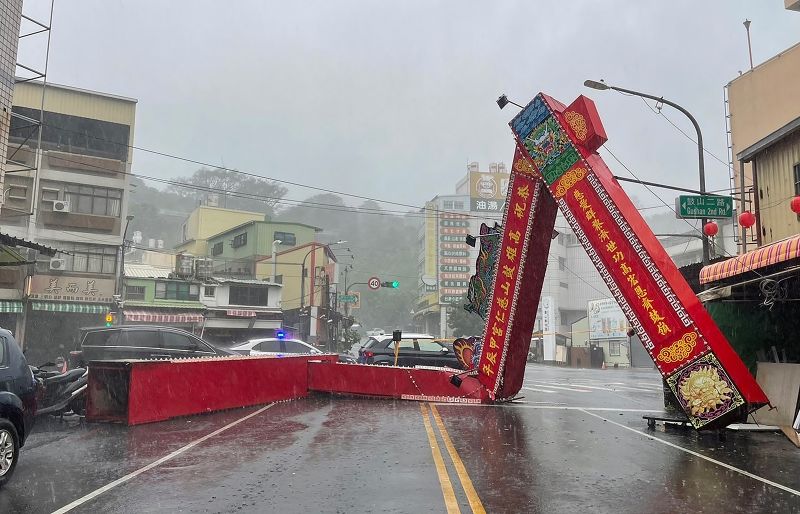
Typhoon Krathon’s Deadly Arrival: Slow-Moving Storm Claims Two Lives in Southern Taiwan
As climate change tightens its grip on the world, natural disasters are becoming more frequent and severe, and their impacts on human life are devastating. The recent case of Typhoon Krathon in Southern Taiwan is a tragic example. A slow-moving, severe typhoon, Krathon had an unusually extended duration over Taiwan, causing significant damage and two unfortunate fatalities.
Typhoon Krathon, characterized by its slow pace, was unlike traditional typhoons that hit and depart swiftly. It lingered over Taiwan, continually dispersing high volumes of rainfall, which led to severe flooding across the southern part of the island. The slow movement of the typhoon allowed the storm to gather and unleash more power, resulting in a longer duration of heavy rain and strong winds, making it particularly dangerous and mercilessly testing the resilience of the people and infrastructure of Taiwan.
The victims of this natural disaster were two local residents. One an elderly individual, swept away by the strong flood currents triggered by the torrential rain, and the other a middle-aged man, whose life was claimed when a massive landslide, triggered by the incessant rain, crushed his house in a mountainous area.
In the wake of such tragedies, the community’s response is remarkable. Emergency and rescue teams, local authorities, and citizens came together in a show of solidarity, unity, and resilience. However, the slow-moving nature of Typhoon Krathon posed new challenges for the rescue operations. This included addressing immediate life-threatening incidents while the typhoon was still in effect, the evacuation of thousands of people from their homes, and providing emergency shelter for those who lost their homes in the disaster.
The loss of life caused by Typhoon Krathon is a grim reminder of the power and unpredictability of the natural world. The typhoon’s slow movement amplified the typical destruction usually seen during such storms and emphasized the need for continued research and understanding of typhoons and their associated rainfall and flooding.
Concerning infrastructure, the destruction left by Krathon highlights the need for superior design and stronger, more resilient buildings, particularly in areas susceptible to such natural disasters. Flood defences, such as higher, stronger sea walls and river banks, are also a priority, as coastal and riverside towns and cities bore the brunt of the typhoon’s wrath.
As for emergency preparedness, the situation calls for proactive measures. It underscores the importance of effective and early warning systems, efficient evacuation procedures, the training of more first responders, and improved communication systems. Preparing for a typhoon should not only be in response to a warning by meteorological agencies, but proactive measures should be a year-round activity.
While the rescue and recovery efforts continue, the impacts from Typhoon Krathon have yet again brought into focus the critical issues of climate change and the need for efficient disaster management. It is a wake-up call to the urgency of both national and international climate actions in order to mitigate severe weather events and to better prepare for when they inevitably occur.
Typhoon Krathon, with its slow, heavy-footed tread over Taiwan, has thus not just left a trail of physical devastation, but also invaluable lessons that could help save more lives in the face of future natural disasters.
